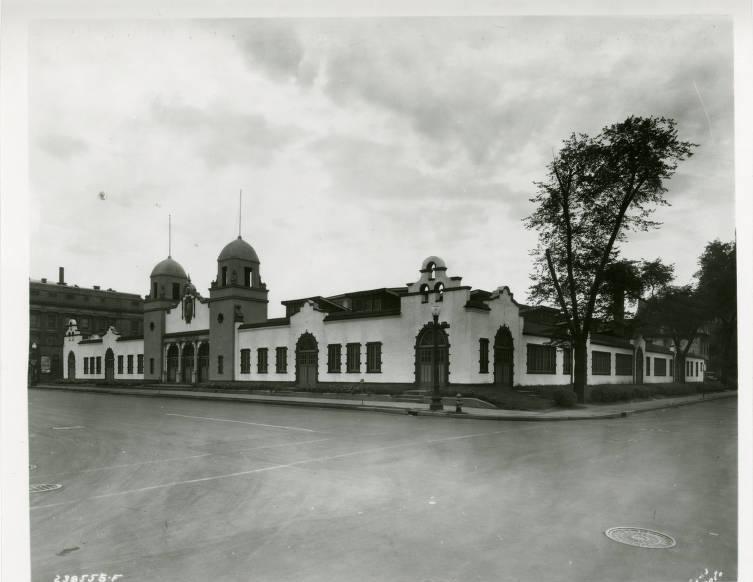Constructed in 1921 on the northwest corner of Ohio and New Jersey streets at a cost of $305,000, Cadle Tabernacle had a seating capacity of 10,000 with an additional 1,500 places in the choir loft. It was of Spanish design with a red-tiled roof and whitewashed exterior, the Ohio Street side being modeled after the Alamo. The tabernacle was purported to be the largest building in America devoted to religious services.

Two historical incidents were the occasion for the construction of the tabernacle. The first was the conversion of E. Howard Cadle (1884-1942), vividly recounted in his autobiographical . Cadle was born in the village of Fredericksburg, Indiana. After several years of a life of gambling and drunkenness, he was told by a doctor that he had Bright’s disease and only six months to live. He returned to his family home in Fredericksburg and there was converted to Christianity on March 14, 1914. He subsequently regained his health, and in a short time, he made a fortune through his chain of shoe repair shops.
The second incident was the highly successful 1921 evangelistic campaign in Indianapolis by the British evangelist Gypsy Smith. Afterward, Cadle decided to build a tabernacle at his own expense in honor of his mother, to whose prayers he credited his salvation. Its purpose was to promote Christianity and to serve as a convention center for general cultural, civic, and educational events.
Due to internal disputes and financial difficulties, Cadle temporarily lost control of the tabernacle in the 1920s. During that decade, , dance marathons, and prizefights were held in the edifice. In 1931, Cadle, heading up the Peoples Church, Inc., regained control of the building and restored it to its original religious purpose.
The permanent choir was said to be the largest of its kind in the world. In 1933 the organization’s radio program, which had begun two years earlier, was picked up by WLW of Cincinnati and became the Nation’s Family Prayer Period, the most popular religious program of its day. The tabernacle sponsored evangelistic campaigns throughout the nation and also distributed radios to pastorless churches in remote rural areas of southern states so that worship services could be conducted.
Upon Cadle’s death in 1942, his wife Ola M. Cadle became director and president of the board of trustees until her death in 1955. In 1952, a television program began. Later in 1963, a prayer chapel and office building were added.
Over the year’s famous evangelists such as Billy Sunday, Aimee Semple McPherson, Billy Graham, and Oral Roberts conducted campaigns at Cadle Tabernacle. Dignitaries such as Britain Prime Minister Lloyd George and Marshal Ferdinand Foch, the French military leader who served as supreme allied commander during World War I, were honored in it and musical concerts were conducted there. For many years, the annual Indiana State Teachers Association convention and the graduation ceremonies of took place in the tabernacle.
In 1968, the property was purchased by , and the tabernacle was razed to make space for a parking lot. Firehouse Square townhomes were built on the site in 2001-2002.

Help improve this entry
Contribute information, offer corrections, suggest images.
You can also recommend new entries related to this topic.